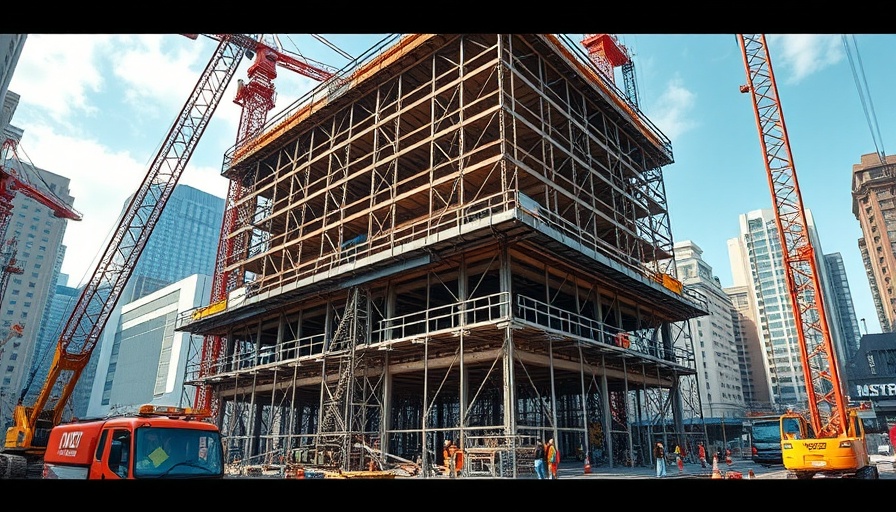
The Impending Tariff Threat on Construction Materials
As the construction industry gears up for another wave of tariffs set to commence on April 2, the potential effects loom heavily on contractors and homeowners alike. Items such as rebar, structural steel, piping, and ductwork are among those most at risk. The warning comes from Steve Stouthamer, executive vice president of project planning for Skanska USA Building, who notes that the rising prices of steel and aluminum have already caused considerable concern.
The Cost of Tariffs: Who Will Feel the Impact?
In response to threats of new tariffs on materials from Canada and Mexico, contractors are preparing for price fluctuations. Steel and aluminum, crucial materials in both residential and commercial construction, are expected to be the hardest hit. Tariffs might not only inflate the prices but could also disrupt ongoing projects and contract negotiations.
Understanding the Risk: Materials Under Pressure
According to Stouthamer, several key materials will experience volatility owing to these tariffs. Reinforcing steel used in concrete is essential for maintaining structural integrity, while structural steel forms the framework of buildings. Aluminum, used in curtainwall and window wall systems, plays a vital role in energy efficiency and aesthetics. Piping and ductwork are fundamental for mechanical and electrical systems, making them indispensable in construction.
Financial Ramifications: Planning for the Future
The mere announcement of potential tariffs can lead to immediate price increases for construction materials. As a contractor, it's essential to plan budgets with these fluctuations in mind. Not only do increased costs affect project quotes, but they can also complicate relationships with clients who may not understand the external pressures at play.
Steps Contractors Can Take: Minimize Exposure
So, what can contractors do to shield themselves from tariff impacts? First and foremost, staying informed is critical. Understanding the materials that risk price hikes allows contractors to adjust quotes and timelines proactively. Furthermore, sourcing materials early, before potential tariffs are enacted, can help mitigate costs. Diversifying supply chains—such as considering local alternatives—may also help navigate the volatility of international tariffs.
Broader Implications for Homeowners
For homeowners embarking on renovation or construction projects, this tariff situation underscores the importance of clear communication with contractors. Understanding how material costs can fluctuate means homeowners can brace for potential changes in project scopes and budgets.
The Bigger Picture: Tariffs and Trade Policies
The anticipated tariffs also highlight broader trade policy implications that extend beyond individual construction projects. As an industry, construction relies heavily on a network of suppliers and manufacturers that cross borders. An increase in tariffs can set off a chain reaction impacting everything from raw materials to labor costs, therefore affecting the overall economy.
What to Watch For: Future Predictions
As we look forward, the potential for new tariffs is not merely an isolated incident; it reflects ongoing tensions in international trade. Stakeholders in the construction industry should prepare for fluctuations not just this spring but as long as tariffs remain a possibility. Contractual agreements will need to adapt, and contingency budgets might become the norm.
In conclusion, while the situation is developing, contractors and homeowners alike can take steps to mitigate risks associated with potential trade tariffs on essential construction materials. Enhanced awareness and strategic planning can help navigate these turbulent waters.
For homeowners and contractors looking for more insights into how to effectively manage construction projects during uncertain times, remember that thorough research and open dialogues are your best allies!
 Add Row
Add Row  Add
Add 




Write A Comment